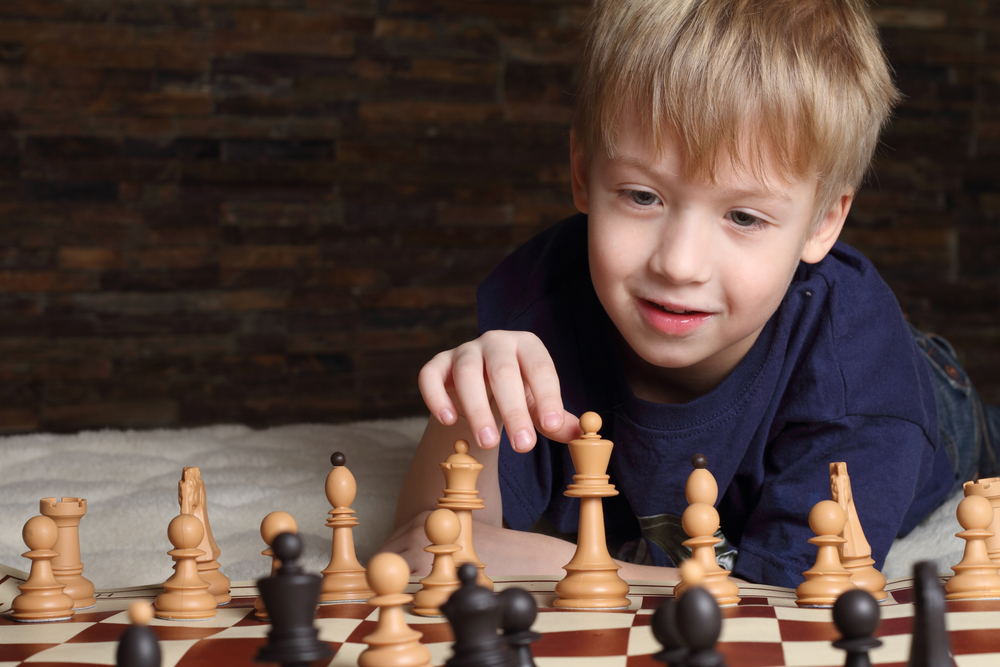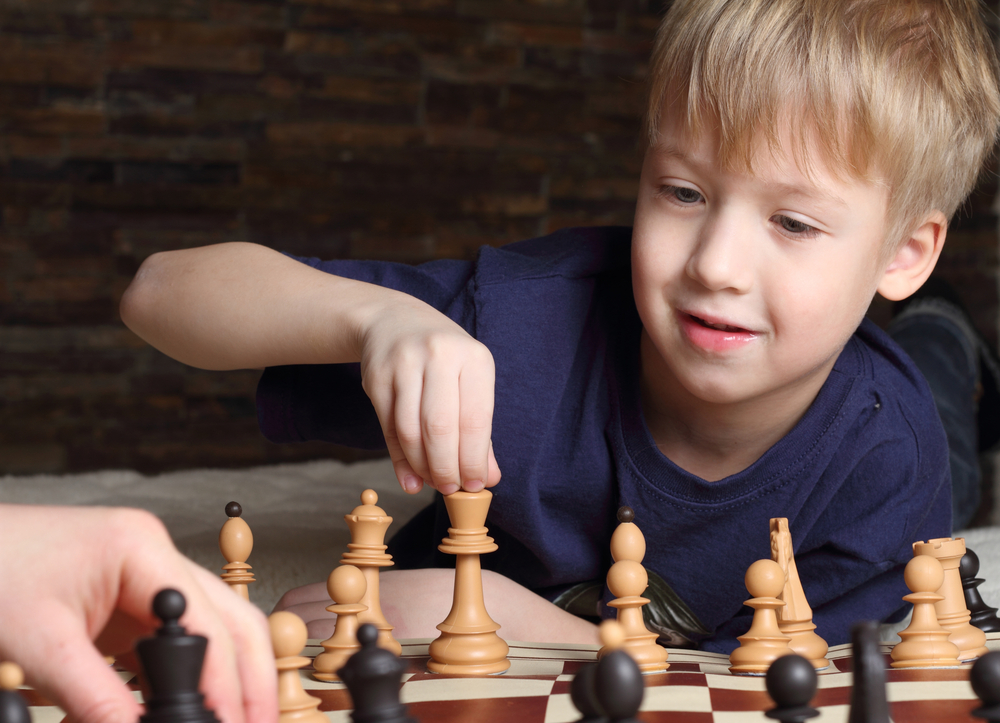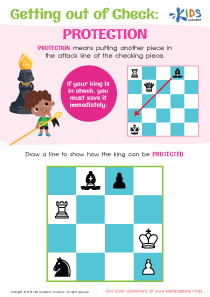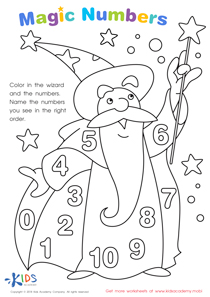Extra Challenge Chess Worksheets for Ages 3-6
37 filtered results
-
From - To
Unlock your child's critical thinking skills with our "Extra Challenge Chess Worksheets for Ages 3-6"! Designed to engage young minds, these worksheets introduce the fundamentals of chess through fun, age-appropriate activities. Each sheet encourages creativity and strategic thinking while incorporating essential problem-solving exercises. Perfect for early learners, our worksheets enhance cognitive development, concentration, and fine motor skills. Whether you're a parent or educator, these printable resources provide exciting challenges that make learning chess enjoyable. Perfect for reinforcing knowledge after lessons or simply exploring the game, our worksheets are a fantastic addition to any preschool curriculum. Begin your child’s chess journey today!
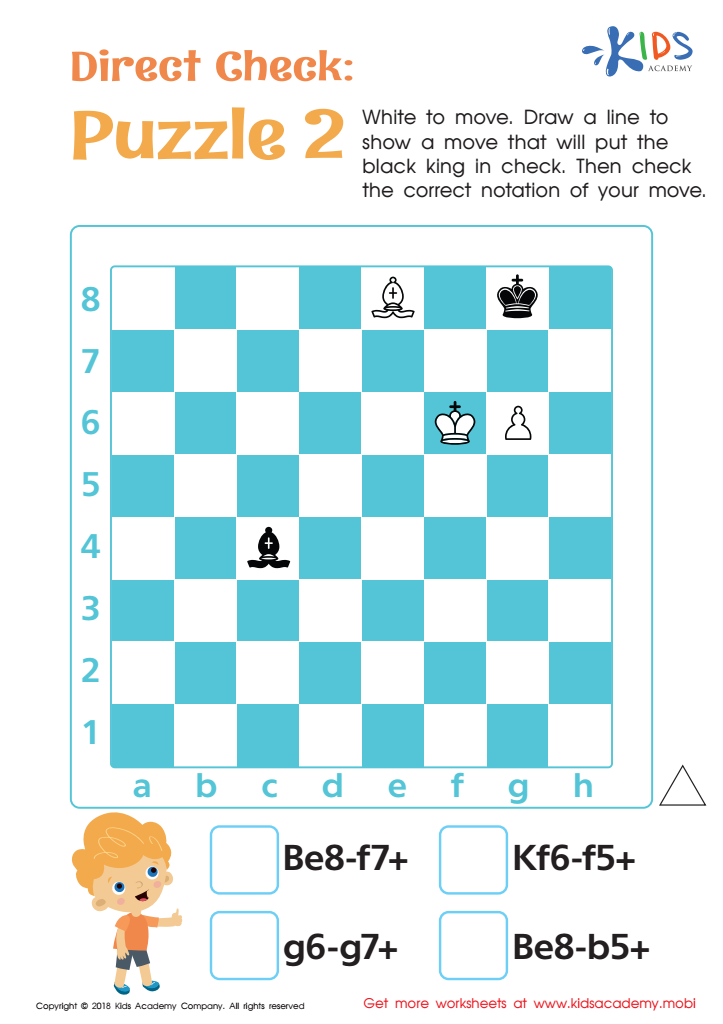

Direct Check: Puzzle 2 Worksheet
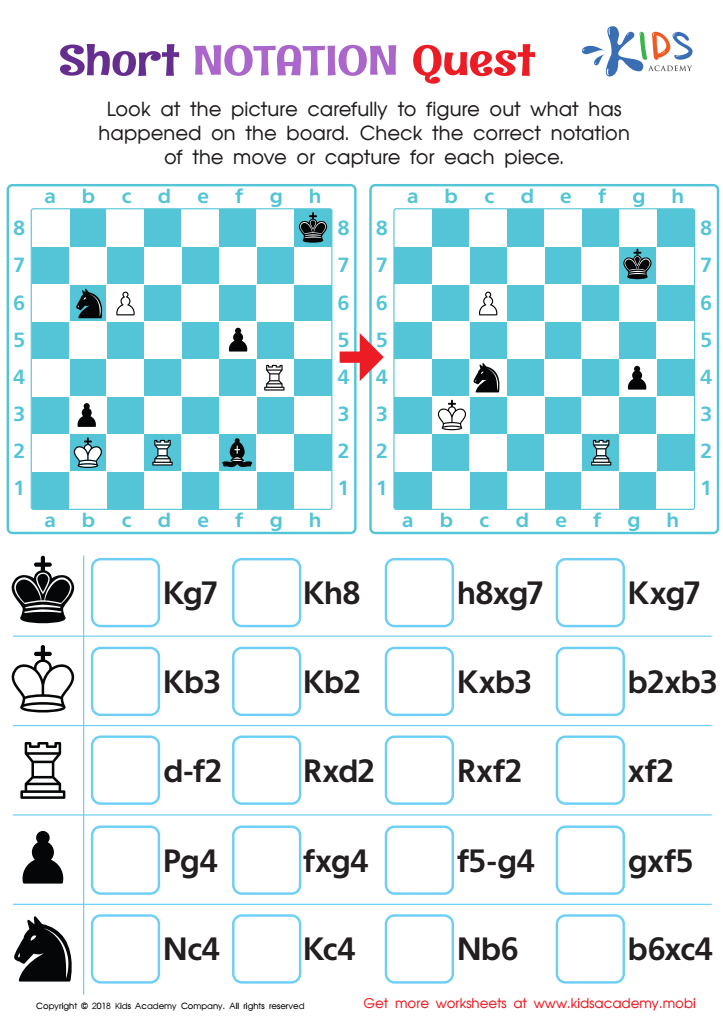

Short Notation Quest Worksheet
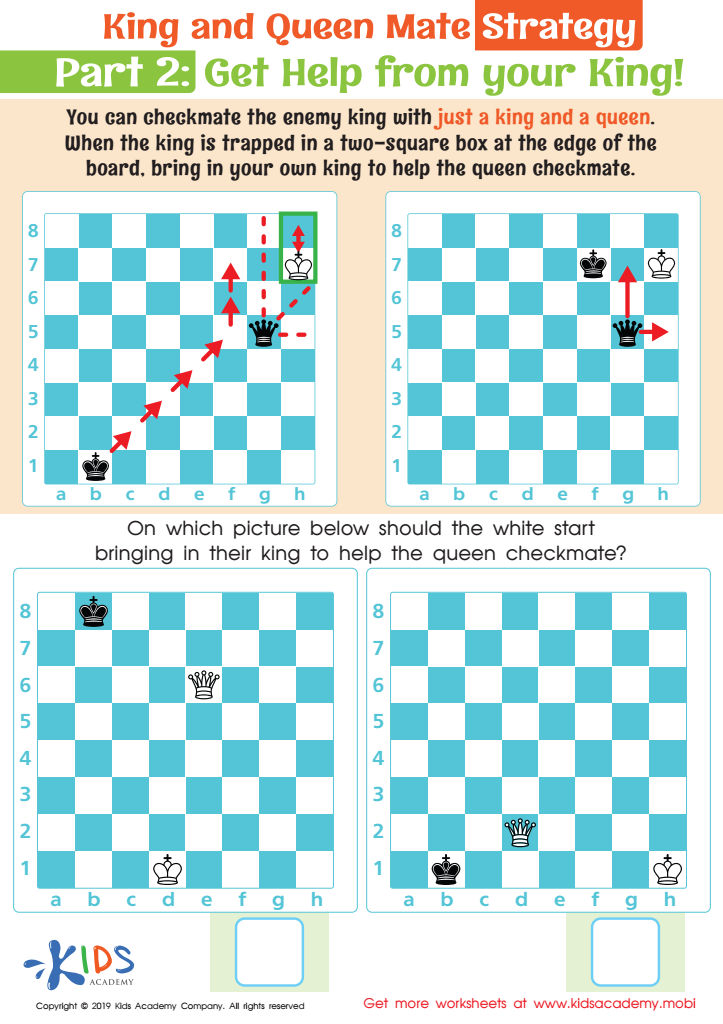

King and Queen Mate Strategy: Part 2 Worksheet
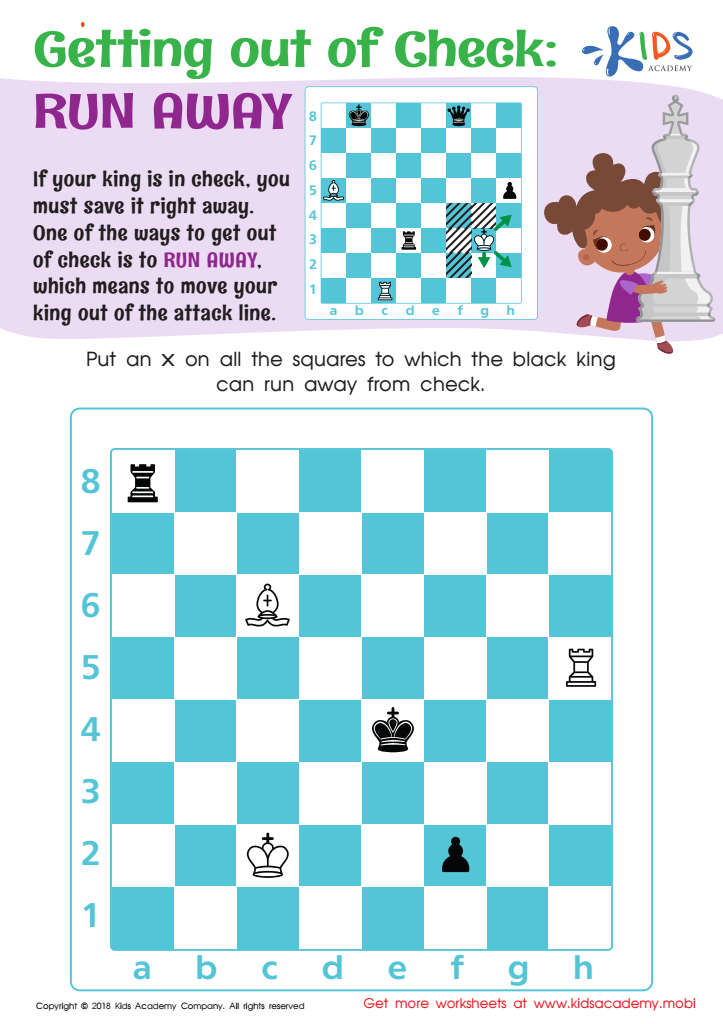

Getting out of Check: Run Away Worksheet
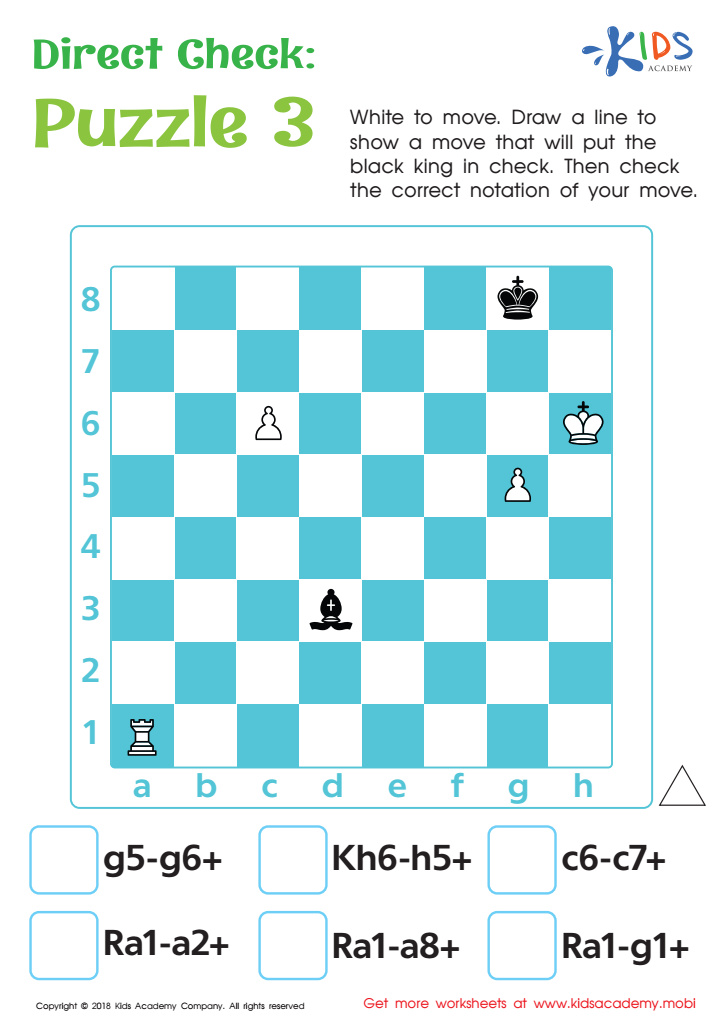

Direct Check: Puzzle 3 Worksheet
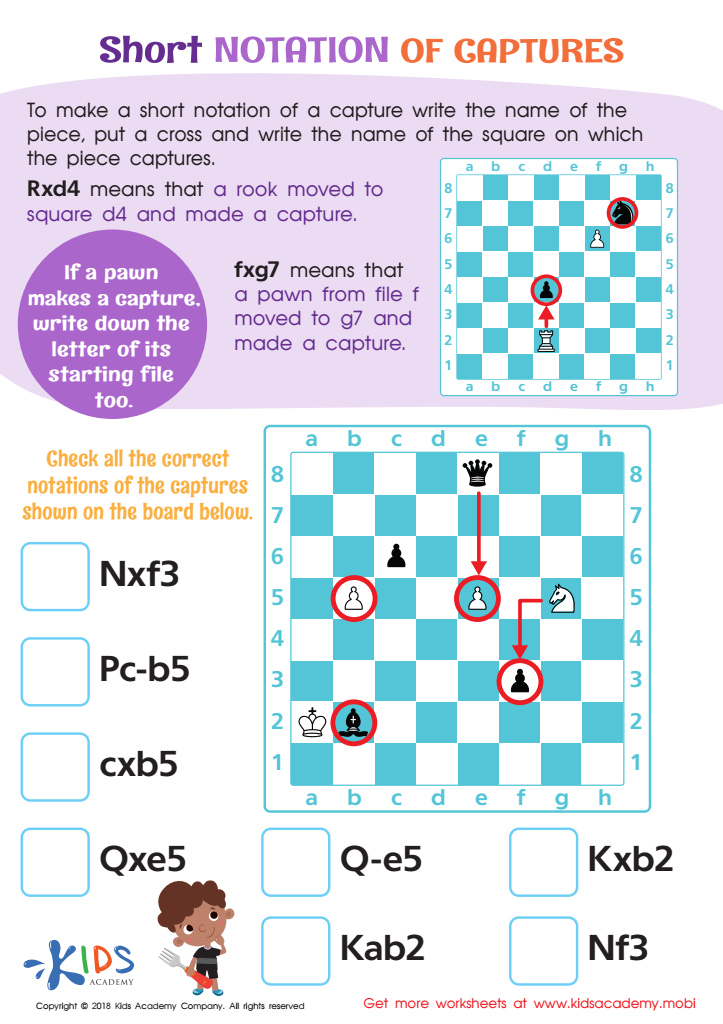

Short Notation of Captures Worksheet
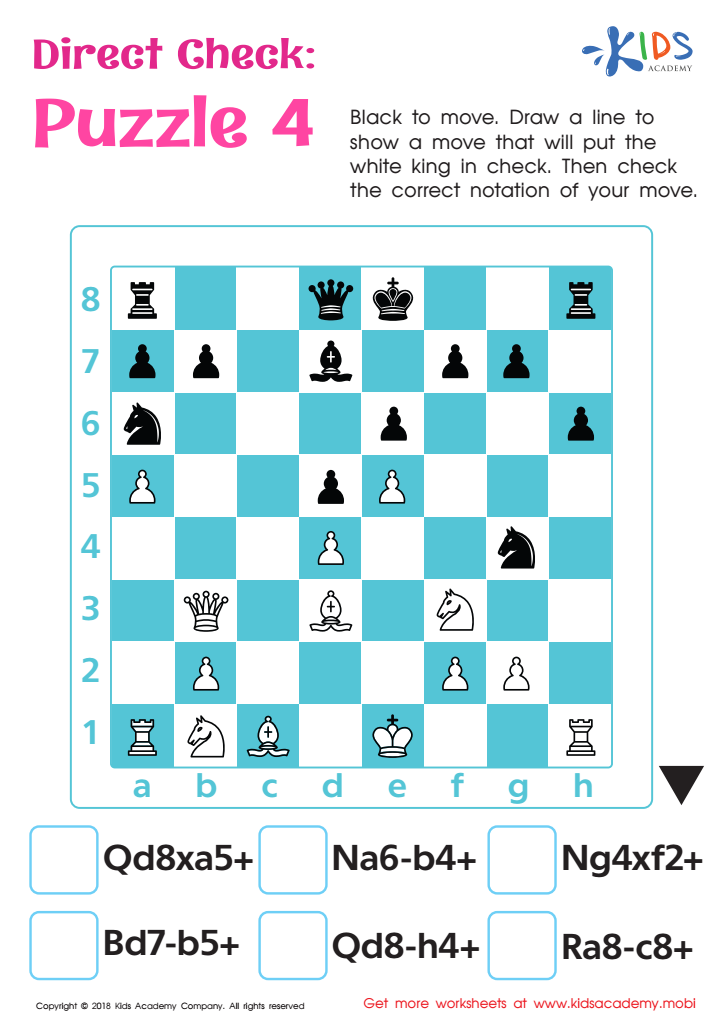

Direct Check: Puzzle 4 Worksheet


King and Queen Mate Strategy: Part 1 Worksheet
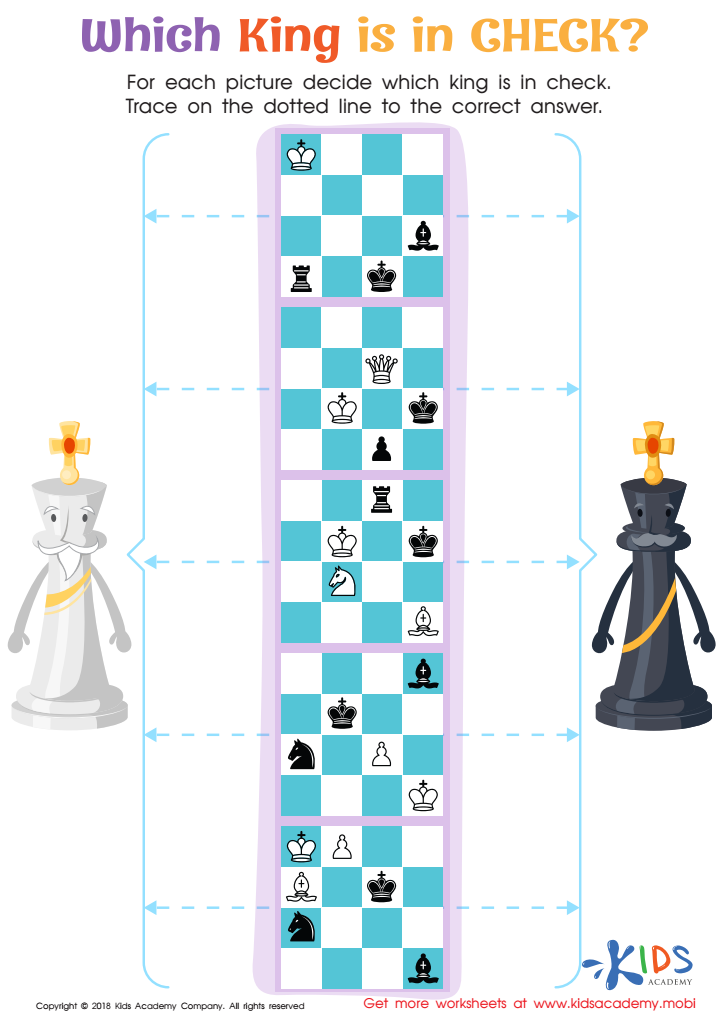

Which King is in Check? Worksheet
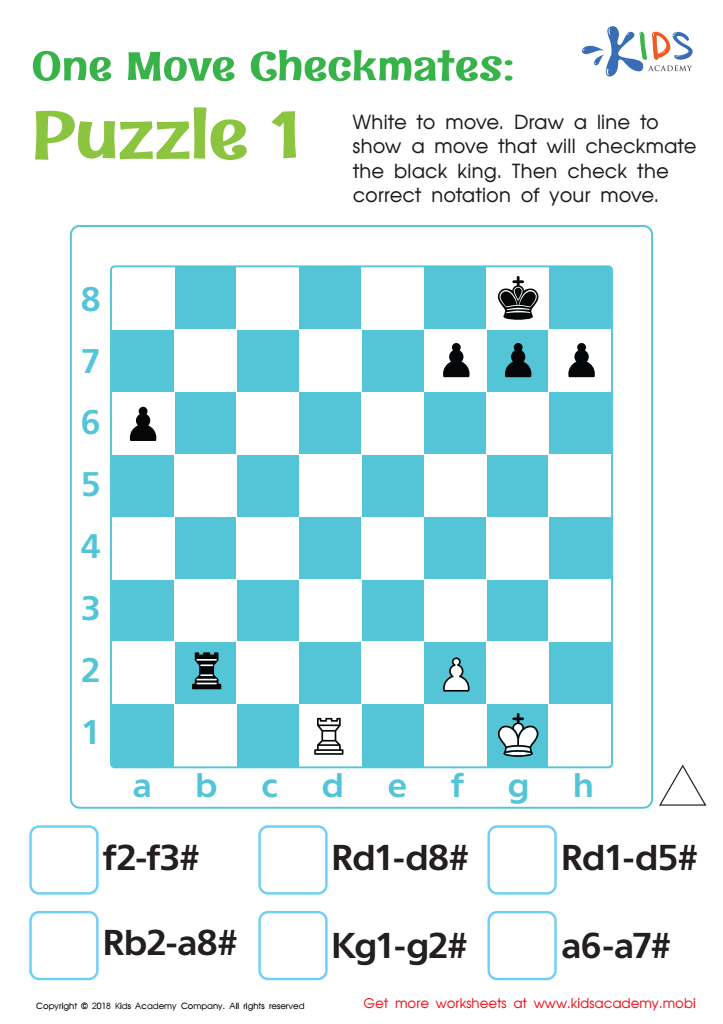

One Move Checkmates: Puzzle 1 Worksheet
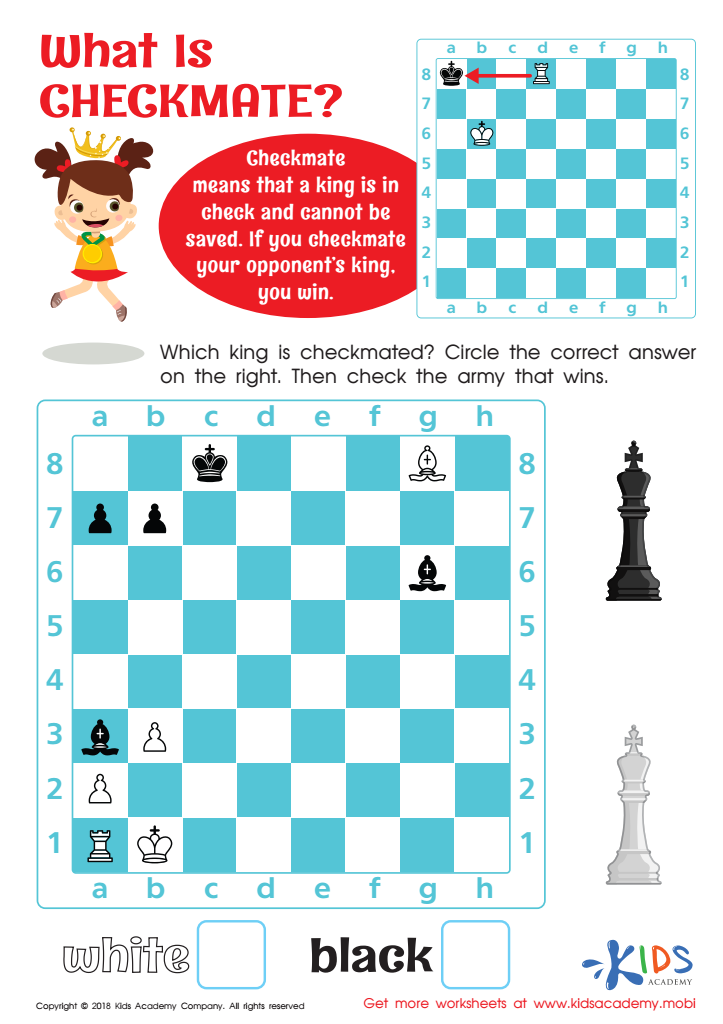

What is Checkmate? Worksheet


Check or Checkmate: Part 2 Worksheet
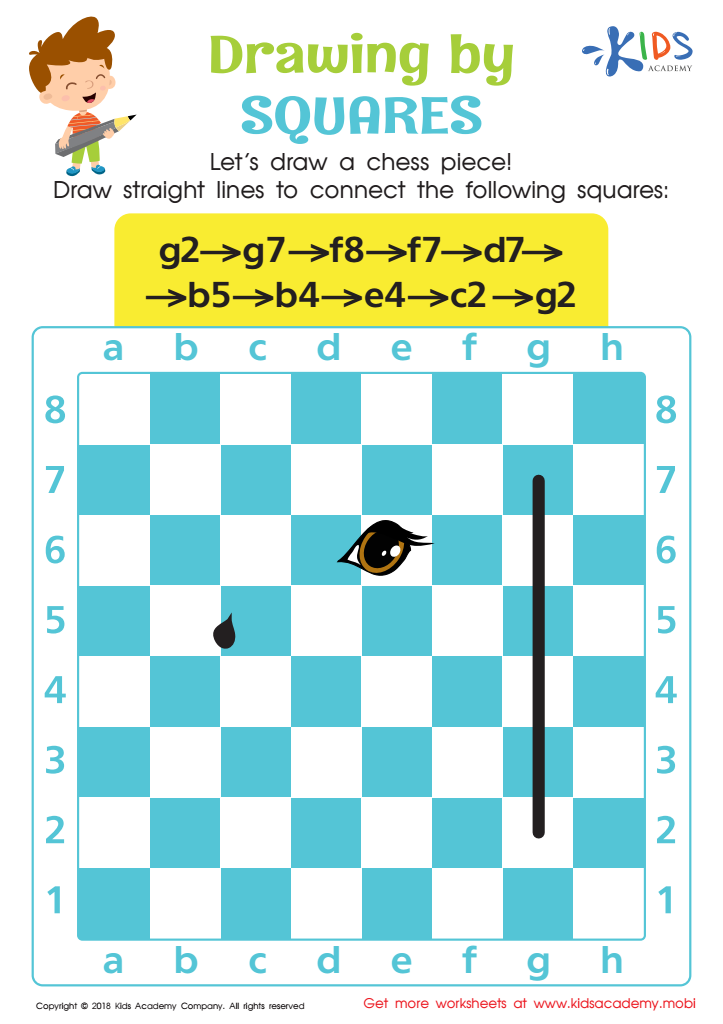

Drawing by Squares Worksheet
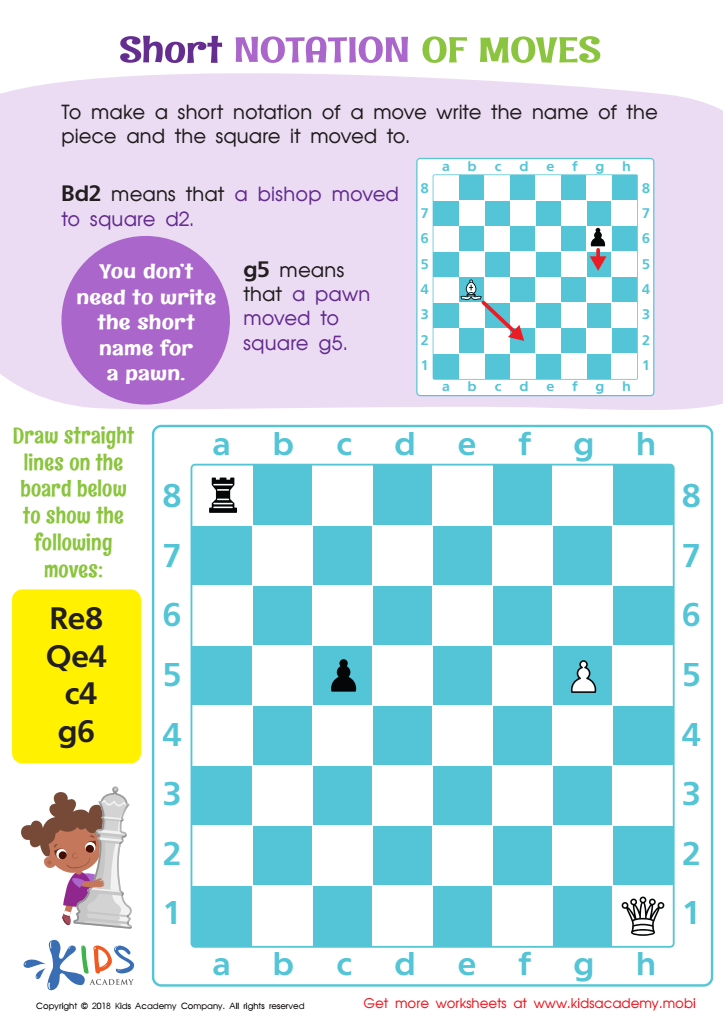

Short Notation of Moves Worksheet
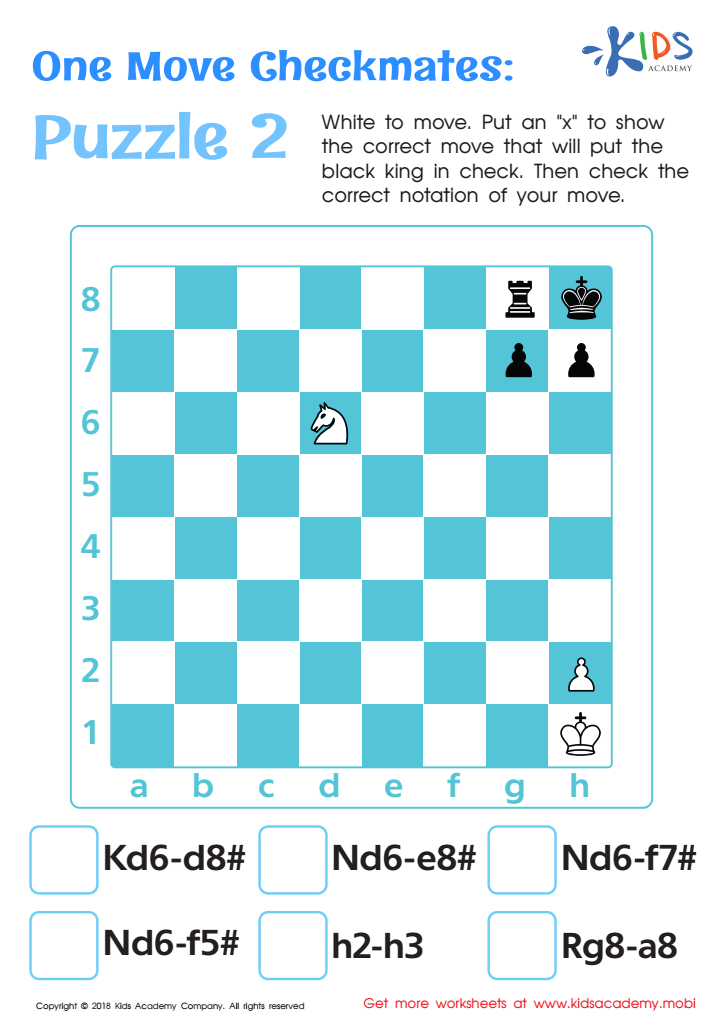

One Move Checkmates: Puzzle 2 Worksheet


One Move Checkmates: Puzzle 3 Worksheet
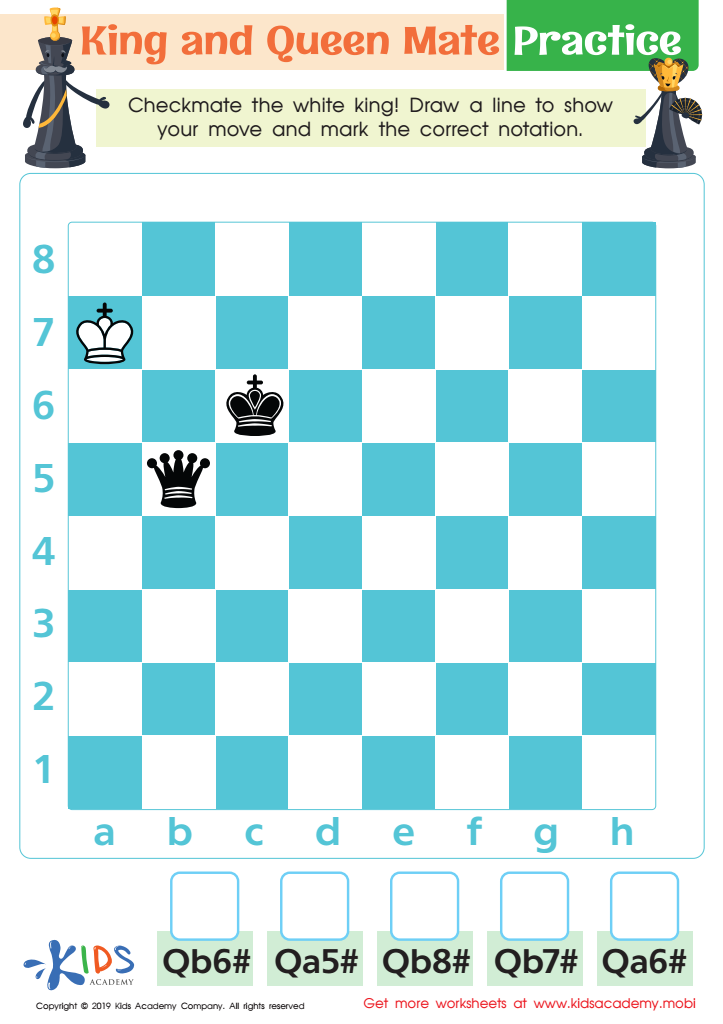

King and Queen Mate Practice Worksheet
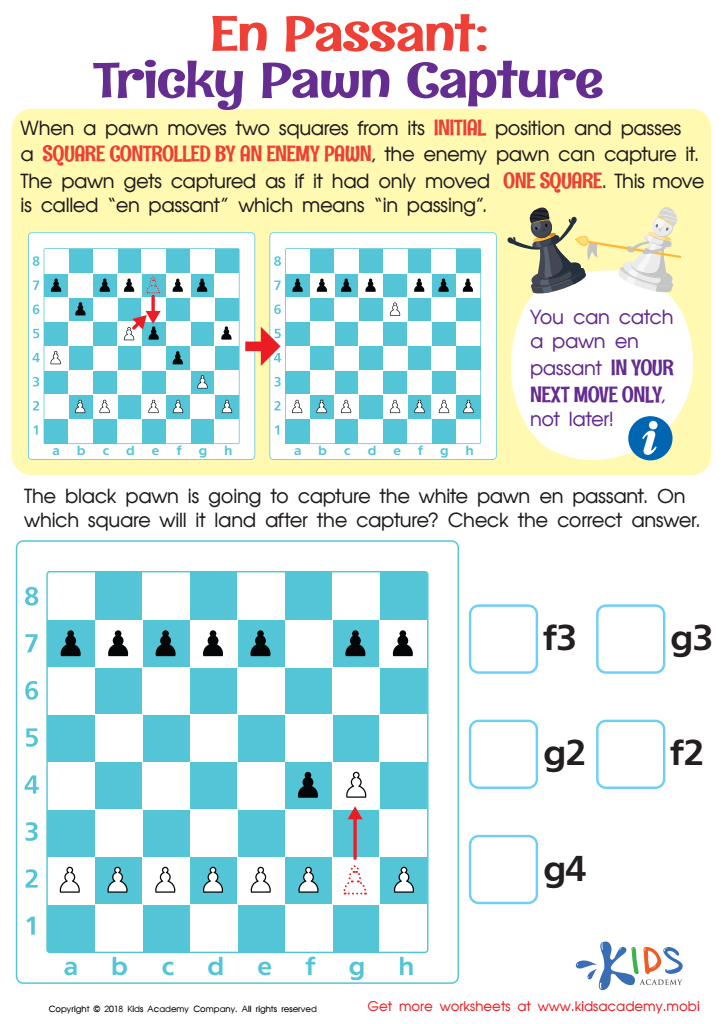

En Passant: Tricky Pawn Capture Worksheet


Two Rook Mate Strategy Worksheet


En Passant: Writing it Down Worksheet


Check or Checkmate: Part 1 Worksheet
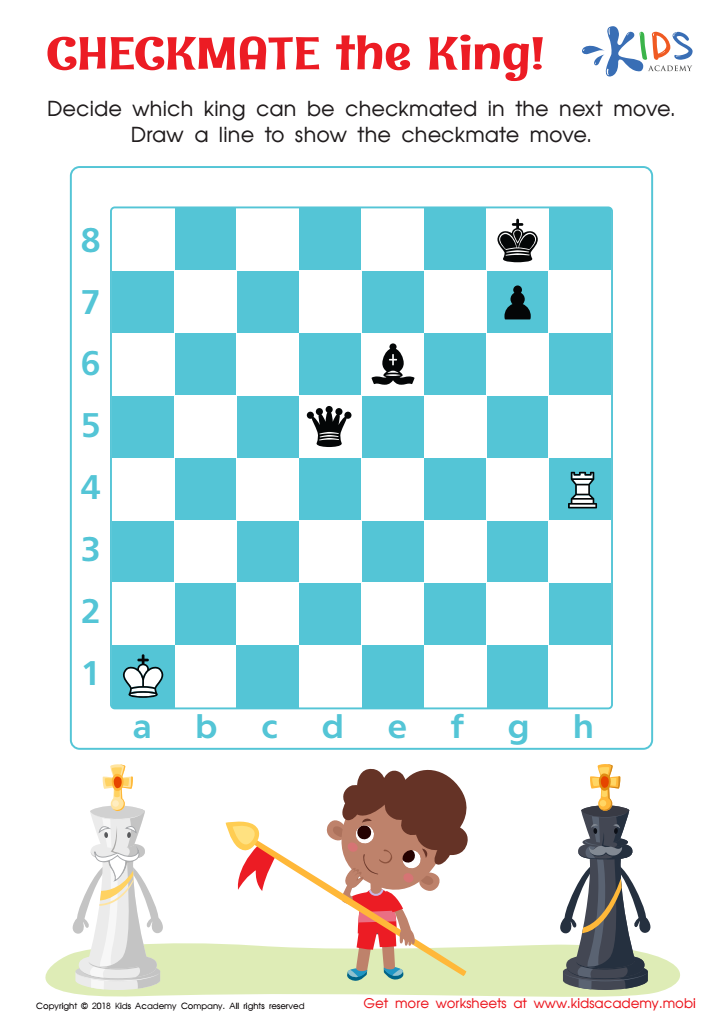

Checkmate the King Worksheet
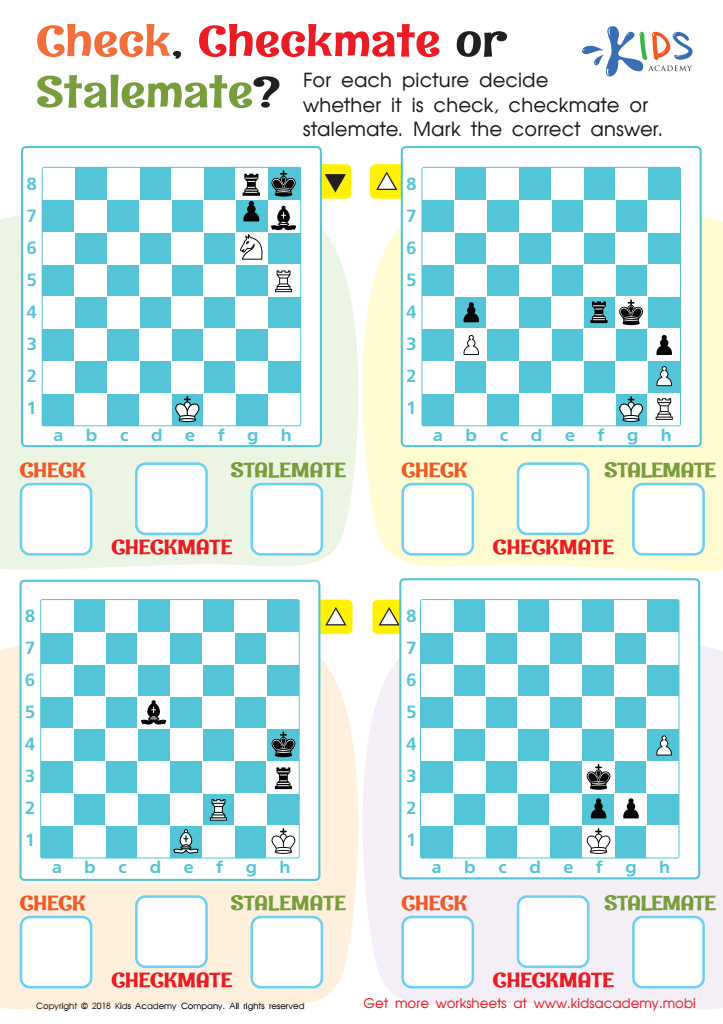

Check. Checkmate or Stalemate? Worksheet
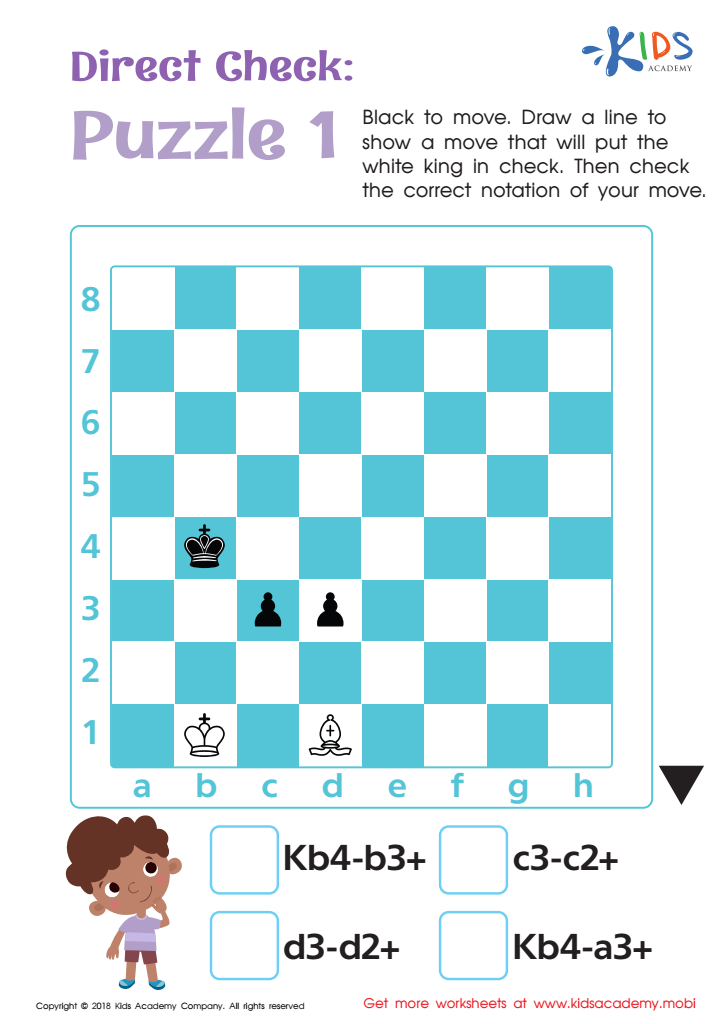

Direct Check: Puzzle 1 Worksheet
Parents and teachers should care about Extra Challenge Chess for ages 3-6 because it provides a foundational skill set that goes beyond simply learning a game. Early engagement with chess nurtures critical thinking, problem-solving abilities, and cognitive development. Chess encourages kids to plan ahead, consider consequences, and develop strategic thinking—skills that are invaluable in academic settings and everyday life.
Moreover, introducing chess at a young age helps improve focus and concentration, as children must both pay attention to their own moves and anticipate their opponent's strategies. This heightened engagement translates to better attention spans and enhanced learning across various subjects.
Chess also promotes social interaction; it encourages children to take turns, show sportsmanship, and respect their peers. This is crucial in developing emotional intelligence and interpersonal skills.
Furthermore, Extra Challenge programs often include fun and dynamic methods of teaching, making learning more enjoyable for young children. This sets a positive tone for lifelong learning. Overall, Extra Challenge Chess fosters a love for learning, instills confidence, and prepares children to tackle complex challenges in the future. Emphasizing chess education in early childhood is an investment in their academic and personal growth.

 Assign to My Students
Assign to My Students






